-
Fear of failure in gardening & how to overcome it
 Lee Burkhill: Award Winning Designer & BBC 1's Garden Rescue Presenters Official Blog
Lee Burkhill: Award Winning Designer & BBC 1's Garden Rescue Presenters Official Blog

I get a lot of emails and comments from new gardeners who really want to garden but have no clue where to start. They don’t know what they’re doing and panic that they will mess it up! This is known as the fear of failure in gardening. So, I thought it was about time we got the skeleton out of the closet and addressed these worries. A problem shared is a problem halved!
Rather than explaining how to dig a hole or guessing as to which plants to start with I want to address the mental blocks that new gardeners find themselves stumbling over. Having spoken to a number of new gardeners on Twitter who all referred to the two areas below as the biggest hurdles when starting to garden.
I’m going to show you exactly how you can conquer both of them, turning yourself into a die-hard, happy gardener!
a) Lack of knowledge of what you’re doing
b) Fear of failure.
So the first issue will take some time to address, you’re not going to become an overnight authority in all things plant-related. However, don’t worry new gardeners, even us established gardeners don’t know everything. It is impossible to know everything about horticulture but it is possible to do a small amount of research to better improve your chances!
The best advice I was given by a gardener when I was much younger was to start by ‘identifying what plants and styles you like even if you don’t know what they are‘ first by a wonderful nursery owner.
This is what I call the ‘Garden Research Stage’.
It’s probably the most exciting part of gardening as it’s where you start to collect all your ideas and inspirations. Digging deeper into what makes you smile just as much as what makes you frown in a garden.
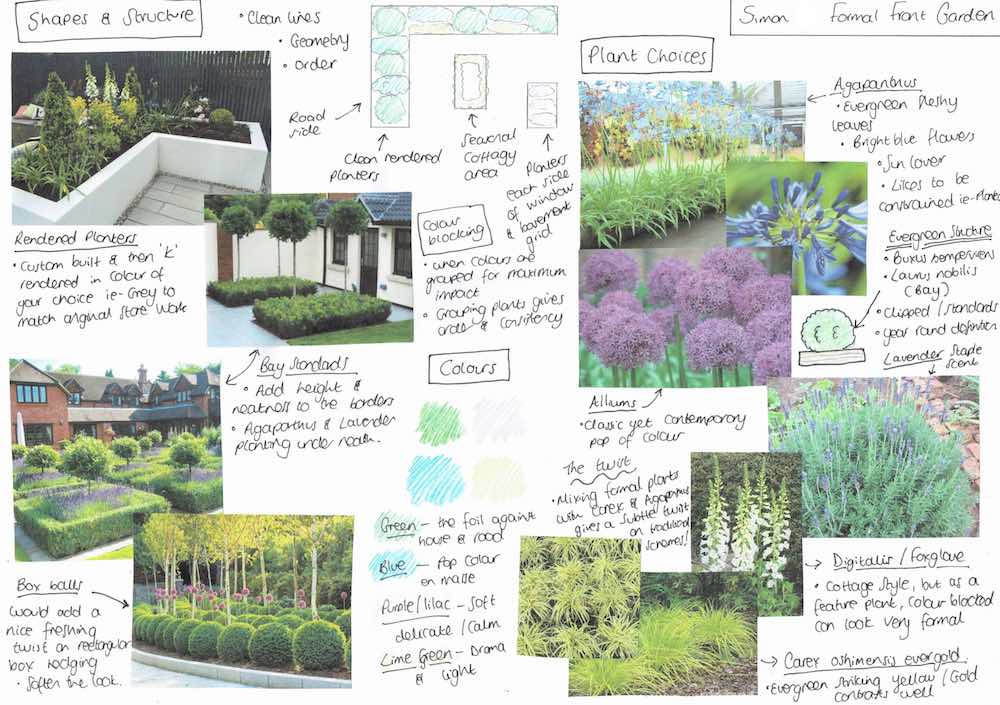
Ignore the Latin plant taxonomy, the plant groups or the design terminology for now. Simply start to look out more at gardens to find what you like. Make notes on the colours and types of plants you like. You don’t need to know their name, in fact, there are apps now that allow you to take a picture of the plant for someone to identify it! Easy peasy!
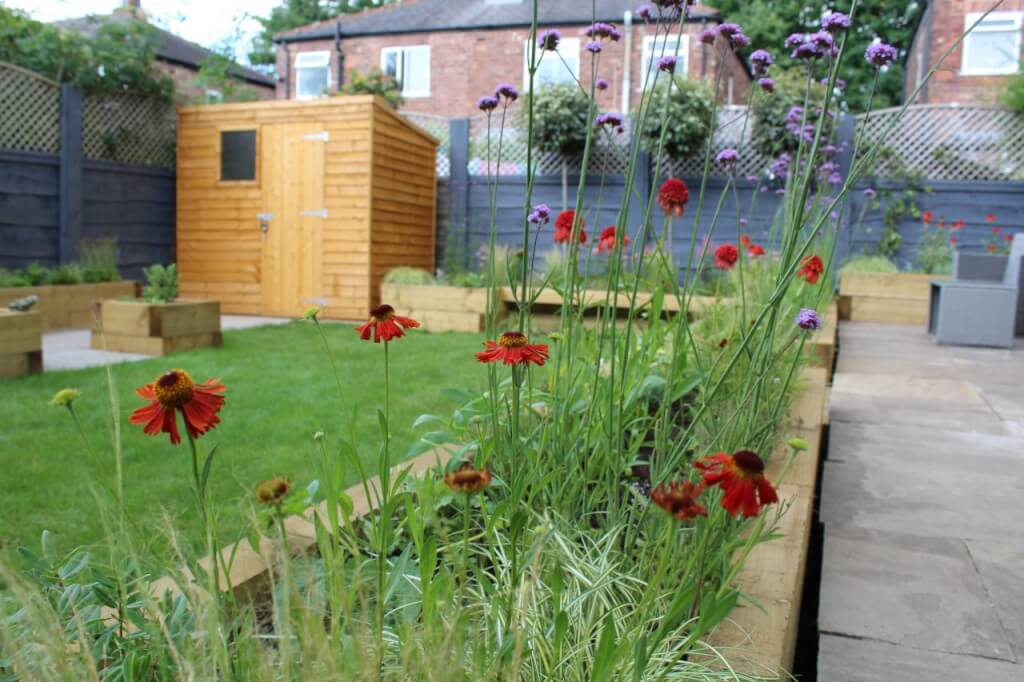
Before you jump into buying plants, think about what you really like.
Drawing a doodle of the flower show or the form can be really useful. Keep all these together in a notebook and this should help start you off on the types of flowers, colours and shapes you would like in your garden. If you get really inspired mood boards of your ideas are an excellent way to see how they look together. You’re already starting to learn so much, see I told you it was easy!
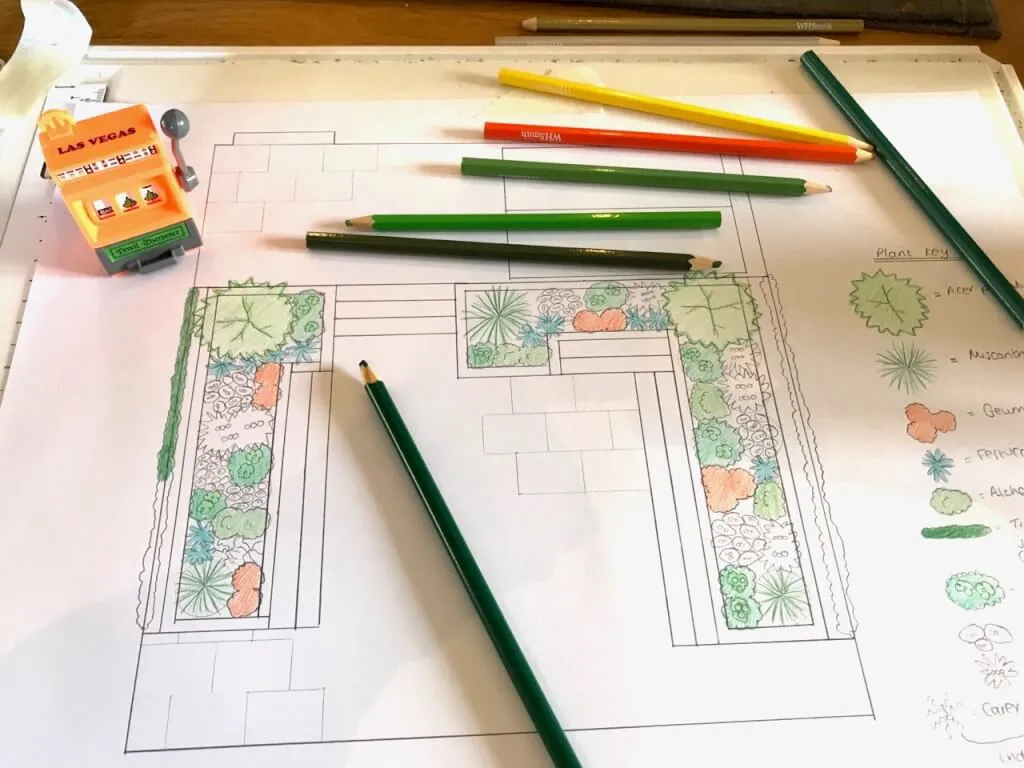
With social media it’s really easy to quickly look at 1000’s of garden images all from the safety of your chair. There are gorgeous flower beds, impressive designs and beautiful blemish-free gardeners! All looking immaculate with soft focus, filters and perfect captions. However, this can sometimes give you a false view of gardening. I, for one, never look that handsome, sexy or stylish when I’m gardening.
Social media gives its users a barrage of filters and show garden effect stylings. Gardening isn’t about looking perfect or having the most aspirational flower beds. It’s about doing something you love, realising the health benefits gardening brings and enjoying the outcomes.
So, whilst it’s useful to search for ‘Cottage style garden‘ or ‘Contemporary back garden‘ ideas, you may need to take it with a pinch of salt. You need to take the filter of perfection away and carefully manicured photoshoots. It is only by seeing these, sometimes in the flesh you can accurately see how these really look or grow and whether you truly like them.
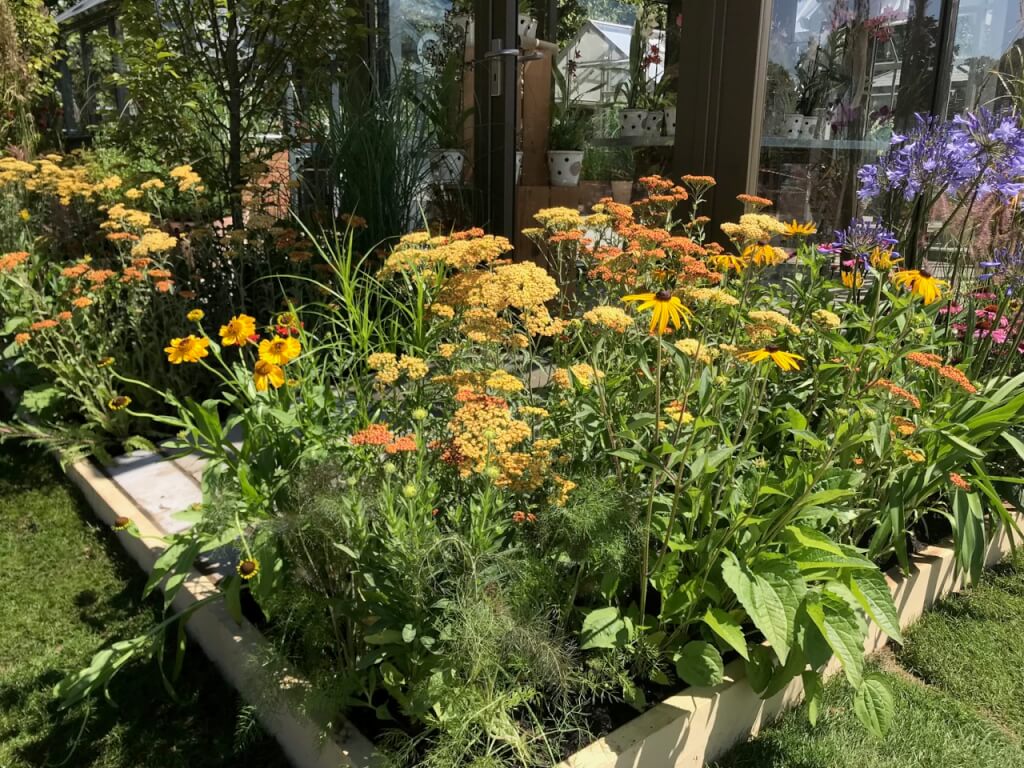
Take social media images of perfect gardens with a pinch of salt!
So it’s great to get some ideas from the likes of Instagram or Youtube but also make sure you get out and about. Viewing your favourite ‘real garden’ throughout the seasons will give you an idea of how it fairs during the year. Once you have an idea of the plants/colours it is time to check to see if any of them are suitable for you. Remembering that gardening is an action, not just a staged passive photoshoot!
Did you know that you can take my course and learn how to become a Garden Ninja yourself? Click here for details
Trust me on this one, there will undoubtedly be a variety of plants in those colours or forms that will work for you but there is no point rushing out to buy loads of full-sun hot flowers if your garden is in dappled shade! Beth Chatto was an advocate of always picking the right plant for the right place. There’s simply no point trying to force a plant to grow in conditions it’s not readily accepting of.
The next phase is the ‘Site & Soil Survey’ stage.
Don’t worry it only takes 5 mins to do this bit and will save you endless frustrations when starting to garden. It may sound detailed but if you follow my guides it’s actually super simple and gets you one step closer to becoming a real gardener!
Now that you have these two pieces of research complete. You can start to search for plants that will suit your garden and colour preferences. An excellent resource for this is the RHS and Gardeners world plant finders. This is where Google can save you hours of trial and error. Collate a list of at least 15 plants for your garden that would work!
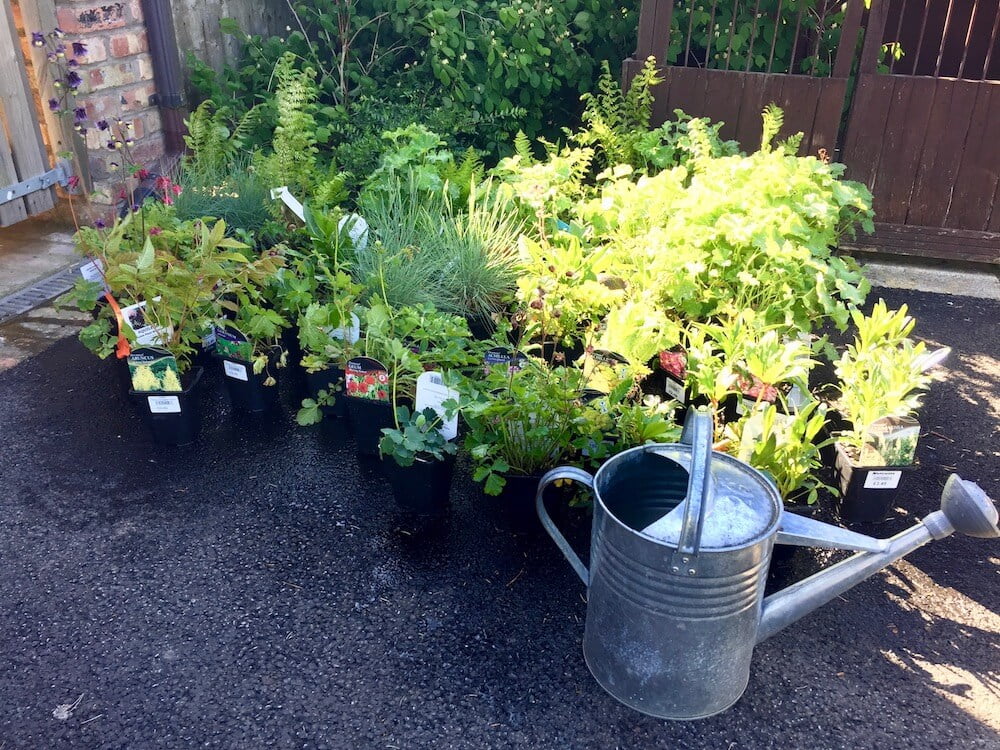
Once you’ve worked out the right plants the shopping binge can begin!. Pick up your cash and keys, it’s time for you to go shopping!
So, the next area that gardeners bring up with me time and time again is the fear of failure. ‘What if it all goes wrong or all the plants die on me’ nerves. Fear of failure arises when the anxiety behind the lack of success overrides our psyche and prevents us from even starting certain tasks. Meaning that those best-laid plans to start your own vegetable garden or outdoor nature haven get shelved before they even see the light of day. It’s a paralysing conundrum of not wanting to fail but also never starting to garden. This means failing by default.
It’s interesting to hear from other gardeners that those who started young and gardened as children. Speaking to them they don’t seem to have developed this fear of failure with gardening. Maybe because they have already failed a few times and been shown by their parents or grandparents that gardening is both part success and failure.
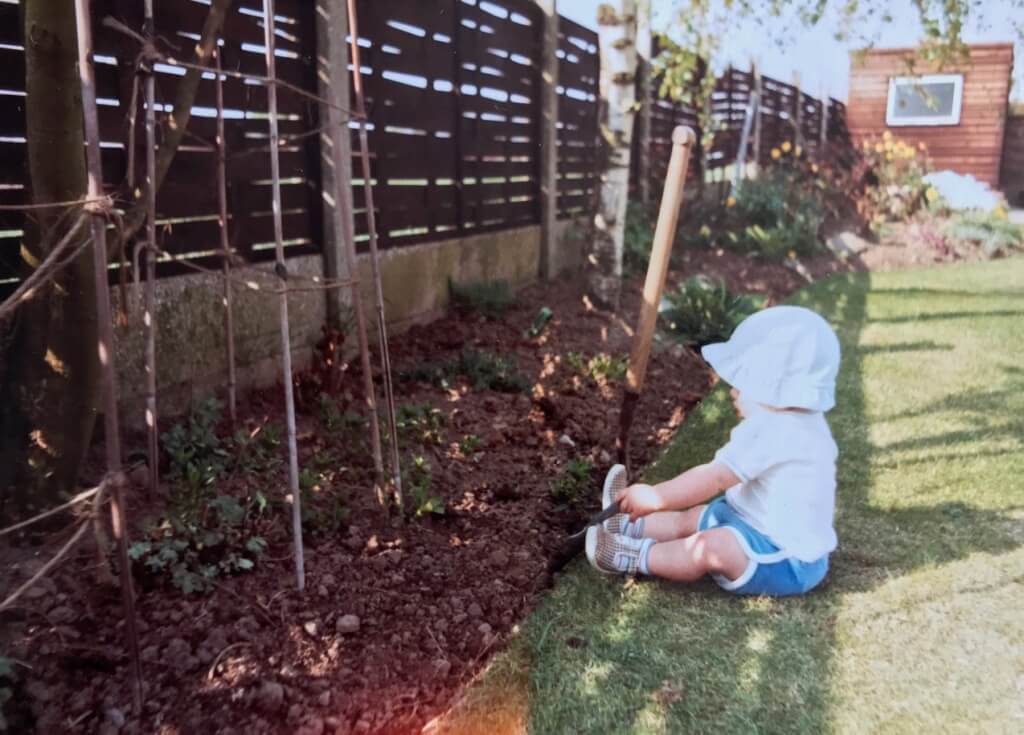
Garden Ninja enjoying the fruits of my labour, notice the trowel in my hand above!
However, if we dig a bit deeper I think this fear stems from our culture of ‘absolute perfection, all of the time’ especially as we get older. Furthermore, most of us at work are competing maybe against rival companies, colleagues, and targets all whilst trying to juggle work and life. Let alone the new influence of ‘perfect’ social media projections on our expectations. It means that gardening has become something else to obsess about in aiming for perfection.
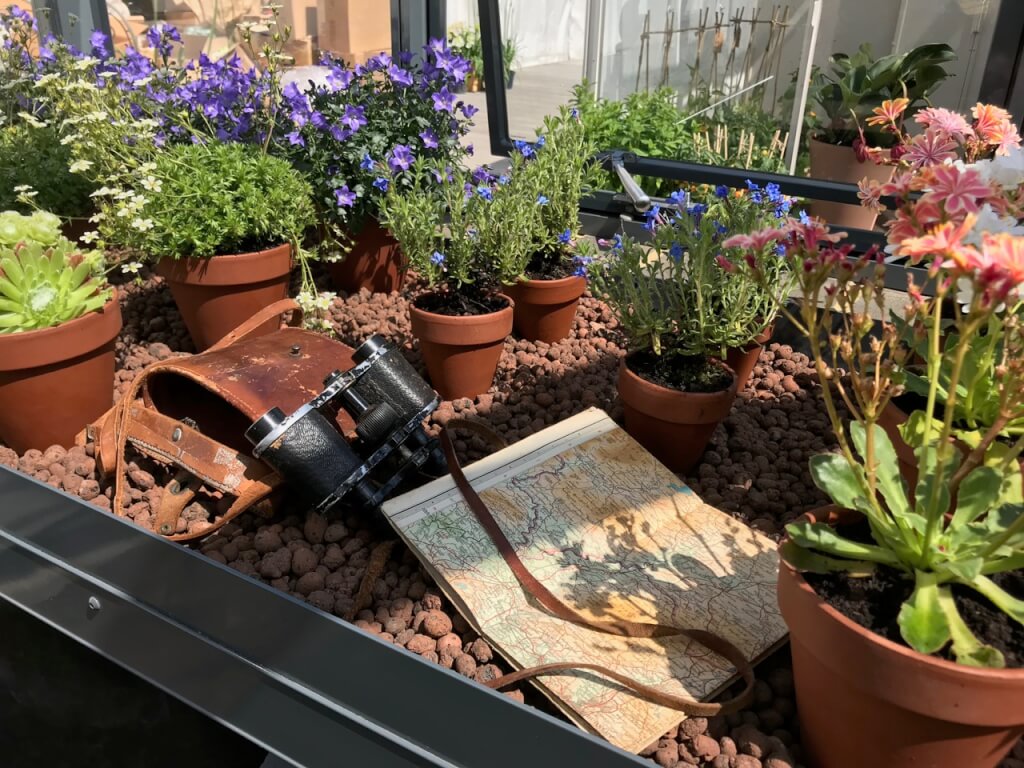
Show gardens, like my Chelsea design here, are manicured ‘installations’ they are not real gardens.
Gardening, however, isn’t really about perfection. In fact, even when gardens are manicured to be perfect, such as show gardens, this isn’t meant to be a reality. It’s an installation an art piece if you will a perishable beauty. Those prize roses are only there for a fleeting moment. A snapshot of the garden year.
The majority of the gardening year should be focused on development.
It’s about trial and error. Sharing your lessons and having a go. Even as a child, I was drawn to the garden. Clearly, at age 2 below, I had no idea about plant groups or soil types, but I had the urge to have a go and water these gooseberries!
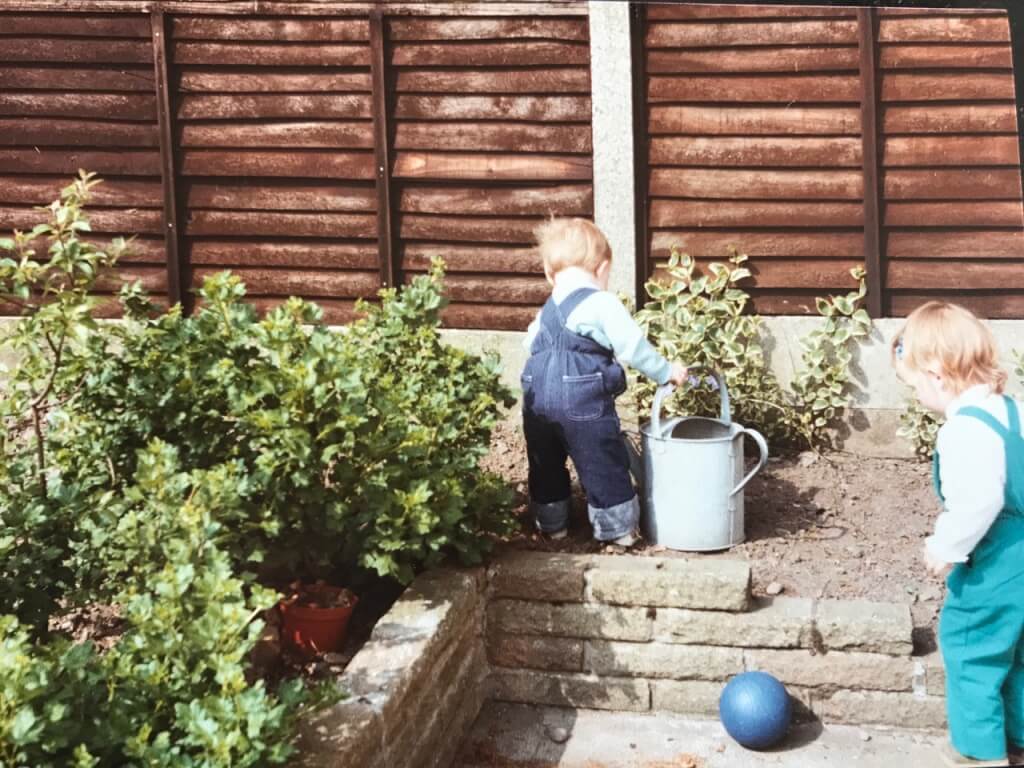
As a child, gardening was just a fun hobby; this shouldn’t change as we grow up!
It’s important to see the real view of gardening and also not be afraid to have a go and start your gardening journey. By all means, take inspiration from beautiful gardens and images, but be kind to yourselves that failure to some degree will occur.
Both Life at No27 and Grow Like Grandad have fantastic blogs showing what I call real gardening. It may be no surprise that they both grow on allotments, too! They are not afraid to show their success stories and their failure in equal measure. Both of these bloggers promote the positive benefits of gardening as a hobby rather than as a competition for aesthetics. If I can give you one piece of advice, it is to embrace possible failure and encourage you to make some mistakes.
My advice on this point is simple: You need to make plenty of mistakes to become a true gardener.
Whilst it may feel like too big a task to start your garden, I urge you to have a go. By having a think first about what you want, rather than just buying what’s available you can help increase your chances of success! My recent top 5 tools for beginner gardeners may help you realise just how little you need to start to garden!
You will have gardening failures, plants that just won’t cooperate or conditions that affect your best-laid plans. However, go with it. Part of the beauty of gardening is the process of gardening. Being out in the garden, planting, sowing, and nurturing to ultimately receive bountiful flowers or edibles is worth its weight in gold. Any failures are simply lessons learnt and will make you a better gardener.
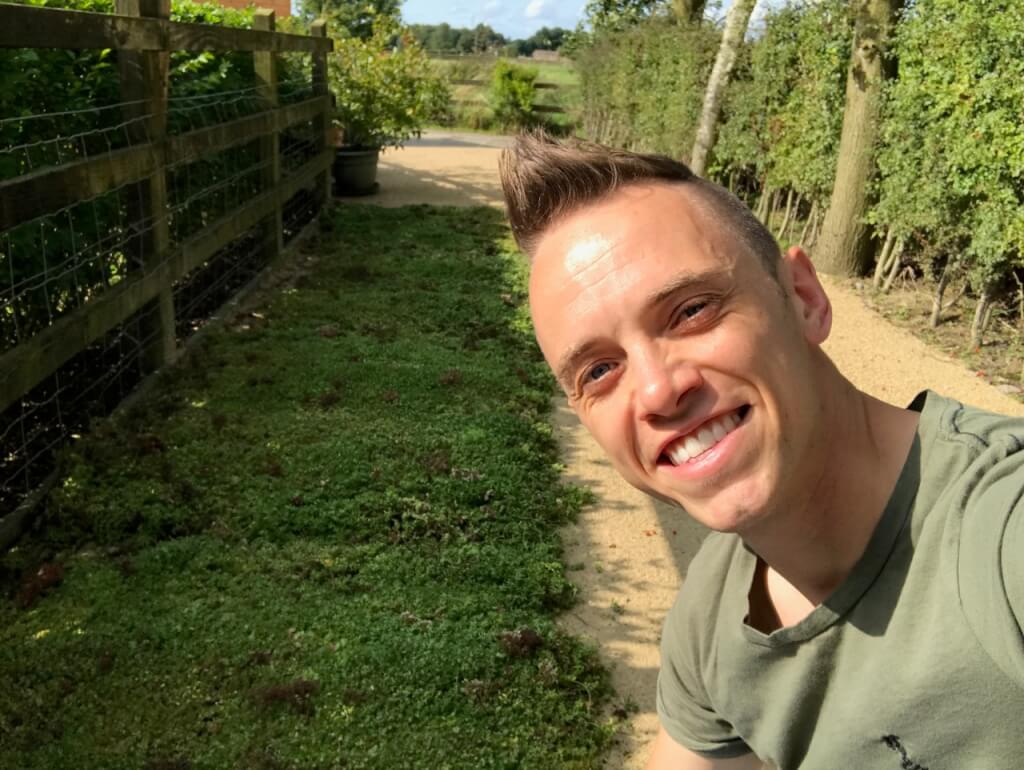
The act of gardening will bring you so many positive health benefits!
It has been proven that the act of gardening is one of the best ways to fight anxiety and mental health issues. The mere act of gardening reduces stress and in itself is a good way to help stay active. So in some ways, whether you succeed or fail it’s still bringing you great benefits. (I have yet to meet a gardener whose success stories didn’t outweigh the odd failure).
To combat your fear of gardening failure you need to first start by researching your horticultural likes and dislikes. Without this, you’re going in blind. This is where the fun really starts as you will notice different plants, colours, shapes and forms in all sorts of gardens on your travels!
The next part is to accept failure, that some of your best-laid plans will go pear-shaped. That’s normal, and it affects us all. It doesn’t matter if you’re a Chelsea winning garden designer, allotment owner or window box obsessive, failure will occur. However, the amount you will learn from those shortcomings makes the odd failure worthwhile!
Have you overcome your fear of gardening or still stuck in the middle? Why not share your stories with other readers? I hope this guide helps you take your first steps in the rewarding world of horticulture!
Happy Gardening!


You must be logged in to post a comment.

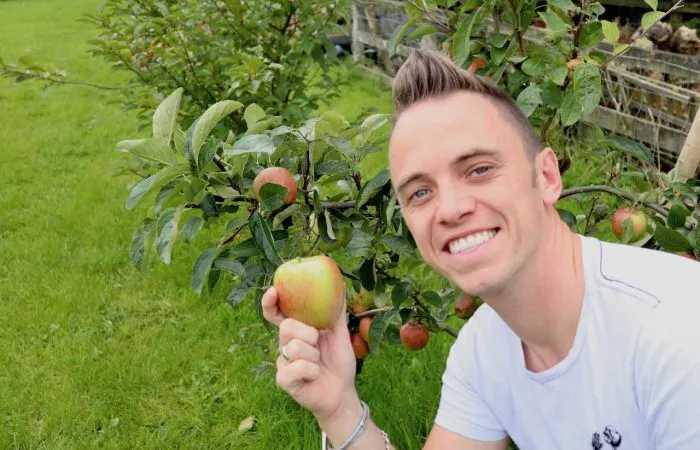
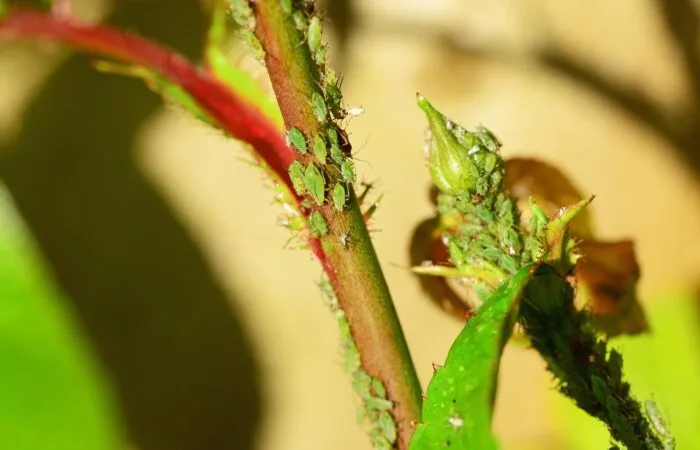
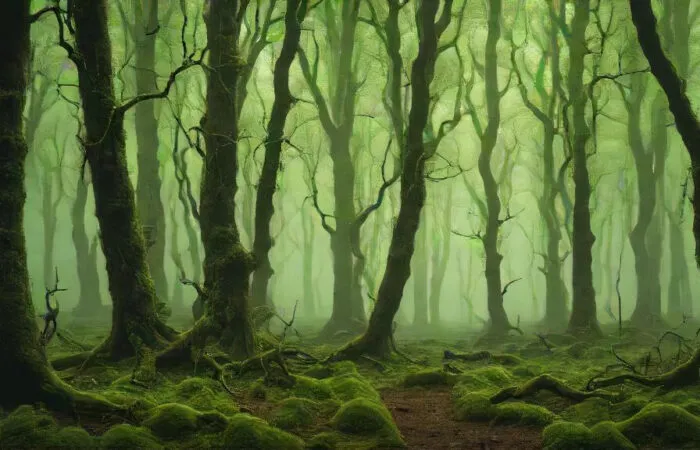
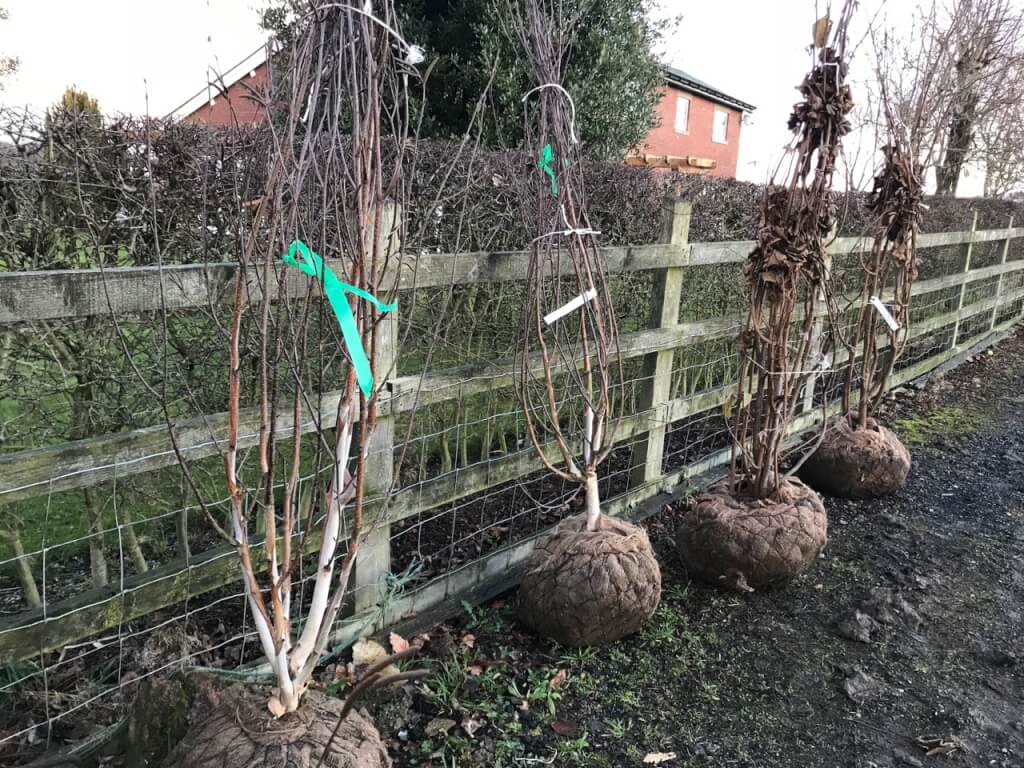
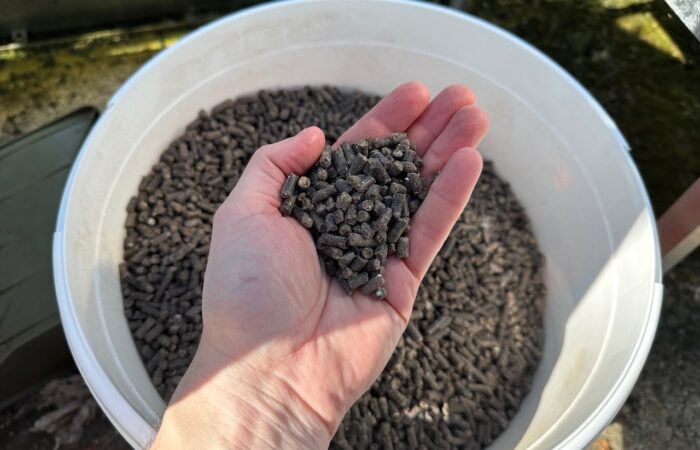
JOIN THE NINJAS

Be the first in line for new Guides, Discount codes and Offers
Great article and lovely photos.
Love this work.